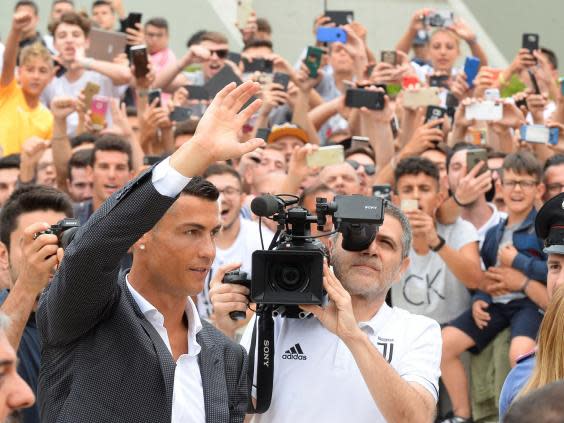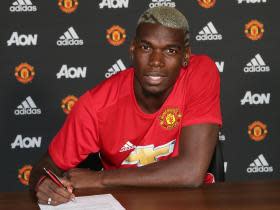Cristiano Ronaldo and why shirt sales don't even come close to paying for a transfer
Unless you've been hiding under a rock for the last fortnight you can't have failed to notice the world's most marketable footballer has swapped Madrid for Turin.
Yes, Cristiano Ronaldo has left Real Madrid in favour of Juventusin a move understood to be worth north of a £100m.
That's quite the outlay for a 33-year-old, even one of the otherworldly talents of the reigning Ballon d'Or winner, and that's before you consider the wages, thought to be upwards of £500,000 per week making up a cool 40% of the club's total wage bill.
It's not all bad news though, of course. The Old Lady are said to have pocketed a staggering $60m in shirt sales in the 24 hours following his unveiling alone.
READ MORE: I'll always carry Roma in my heart, says Liverpool signing Alisson
READ MORE: Cesc Fabregas: Chelsea must keep 'best player' Eden Hazard
READ MORE: Jose Mourinho to make Antonio Valencia club captain
So can a club's shirt sales pay off a transfer fee on their own?
Short answer: No. Not even close.
For the long answer we asked Jake Cohen, a sports lawyer who has worked on a number of high-profile transactions in football, to clear up one of the biggest misconceptions in the modern game.
"It is often claimed that a club can recoup a marquee player’s transfer fee through shirt sales. However, in reality, this couldn’t be further from the truth.

Cristiano Ronaldo was unveiled in Turin on Monday (Reuters)
"Kit deals are not traditional sponsorship deals – they are licensing deals, which enable the kit manufacturers to use the club’s brand to sell branded apparel. Clubs will traditionally receive an annual fee – for example, Manchester United receives £75 million per year from Adidas, Chelsea receives an initial £60 million per year from Nike, and Arsenal receives £30 million per year from Puma – and then 10-15% of the revenue the kit manufacturer generates from shirt sales.
"Furthermore, signing a star player doesn’t lead to as many new kits being sold as one might think. While there will usually be an uptick in shirts sold in the market where the player came from, it is more often the case that those who were already planning on purchasing a shirt will choose to get the new player’s name on the back, rather than an existing player.

Ronaldo's signing has already seen record shirt sales (Juventus FC via Getty Images)
"The kit deal is often a football club’s most lucrative sponsorship, and for good reason. The manufacturers aren’t paying the clubs to have a tiny logo emblazoned on the front of the club’s shirt – rather, they’re making an investment that will yield an excellent return. As an example, Adidas CEO Herbert Hainer projected that Adidas would earn £1.5 billion from its ten-year, £750 million deal with Manchester United.
Read more
Agents, fees and WhatsApp chats: How a transfer really works
"Why don’t football clubs simply manufacture their own shirts and keep 100% of the profits? The simple answer is because they’re football clubs, not kit manufacturers. They don’t have the global distribution networks necessary to manufacture, ship, and sell hundreds of thousands, or in some cases, millions of shirts each year. Many clubs even outsource the logistics of their online shops, which are miniscule operations compared to what is required to manufacture, distribute and market kits on a global scale.
"Football clubs don’t have access to these resources. Even the largest football clubs in the world are comparatively tiny businesses when it comes to the likes of Adidas and Nike. To put it in perspective, Nike has earned substantially more in three months (nearly £7 billion for March, April, and May 2017) than Chelsea have earned in its 112-year history."



